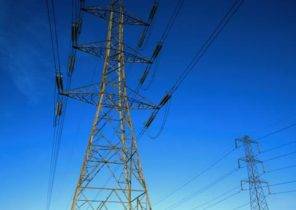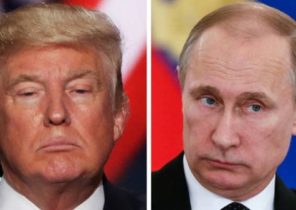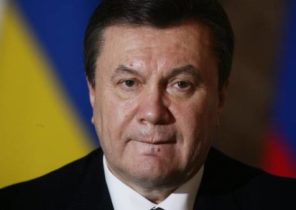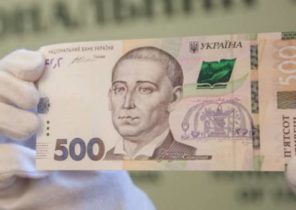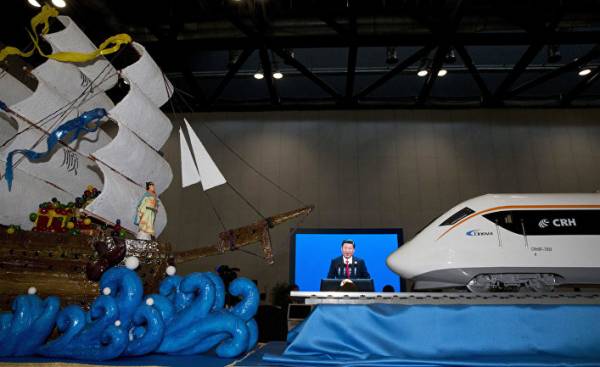
Five countries of Central Asia are the soft underbelly of China and Russia. Hence the militant Islamist contagion may spread to the Chinese province of Xinjiang and the Russian North Caucasus. This old new truth becomes relevant because of the deterioration of the situation in Afghanistan, where recently intensified military action, and where the Taliban (the movement is banned in Russia — approx. ed.) gets a weapon, what USA accuse Russia. The Taliban is a national extremist Islamist movement that defended Osama bin Laden, when his terrorists attacked the United States in 2011.
But Central Asia is not only the fear of the spread of war and terror in the place in the world where a lot of poor areas. It is also a land of opportunities. From many points of view, Central Asia is the final destination station. For many years after the collapse of the Soviet Union in 1991, when former Soviet republics gained independence, there were almost no investment. Therefore, the millions of inhabitants of Central Asia have become migrant workers, for example, in Russia, where the proletarians live in poverty on the last rung of the social hierarchy, and where they’re sending home his meager earnings, where it immediately becomes quite significant.
But the destination station is showing signs of recovery. Revival is on the rails and asphalt from China. China has invested a billion, a million million dollars, the new silk road, which has Railways, highways and ports would connect China with 60 countries. The new silk road, which in English is called abbreviated OBOR (One Belt One Road), and Central Asia occupy a Central place in the global orientation of China — just as it was a thousand and 500 years ago. In mid-may in Beijing held a widely publicized meeting of the leaders of countries that cooperate with China in this large and prestigious project.
The purpose of Chinese leader XI Jinping is to use the wealth of China to create a new global economy on Chinese terms. This should happen by establishing Chinese control over a part of the global infrastructure. The country already controls a large part of the production. Exports and growth abroad, along the new silk road, should be the driving force of the Chinese economy during the reign of si.
Two of the six main tracks have to go through Central Asia to Europe. One must pass through Mongolia and Russia, and one through Pakistan. And the last two will be from China to other countries by sea. Thus, Central Asia plays a major role in this giant Chinese project. This is caused by important reasons. One reason is the oil and gas fields primarily in Kazakhstan. Another reason has to do with Europe, the largest market of goods produced in China. All Central Asian countries received large loans in Chinese banks and modernize its infrastructure, and Chinese banks give out loans on new silk road without delay.
This has large policy implications and have led to the fact that the Central Asian countries are now increasingly turning towards China and “relieved” of Russia, which was “big brother” in the region after the collapse of the Soviet Union. Russia has no such economic muscle, like China, and the Kremlin feared that I may lose its influence in Central Asia. Russian President Vladimir Putin is trying to correct the position of engagement of these countries in the development of the Eurasian economic Union — the Kremlin’s “umbrella”, whose goal is also to balance the influence of the EU. But in reality, Russia has no chance in the struggle with China for influence, which he has, because of the investment.
But not only the economy that made the new silk road great foreign policy project of the si. Developed Central Asia is important in order to stop the Islamist contagion coming from Afghanistan to Western China province of Xinjiang. The Uighurs really are a Central Asian steppe people, just like all the other peoples of Central Asia. China needs to have stability in their border areas.
But this is no easy task. The political structures of the countries of Central Asia vary from Kyrgyzstan, a relatively open and democratic, to Turkmenistan, the most terrible dictatorship of oppression in the world. They range from the rich oil and gas of Kazakhstan, currently soft dictatorship, to Uzbekistan, which is completely dependent on its cotton industry and continues to keep people in poverty.
Central Asia could take place as a region. Half the population is younger than 27 years, and the local population — people with relatively good education, almost all can read and write. This attractive region. But it is also a region where there is a great danger of infection from neighbouring Afghanistan. Therefore, there is a fierce struggle for the souls and resources it involves the Chinese influence, relations with Russia and Islamism from Afghanistan. But it seems that the winner of this fight is predetermined.



